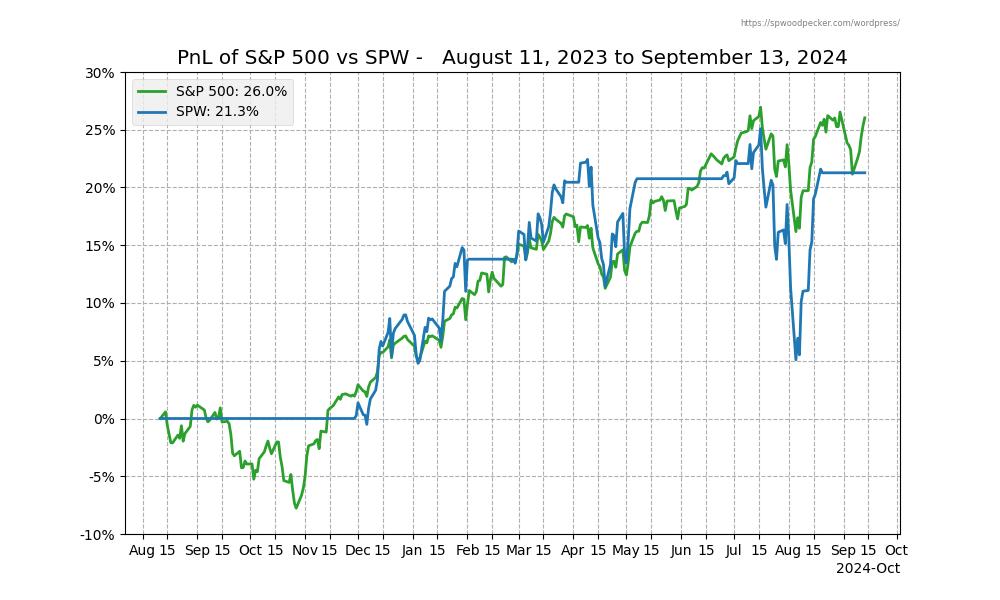SP500 Trading Strategy update for July 01 25
| Buy/Hold | SPW | |
| PNL | 3,884 | 2,738 |
| OK | n/a | 85.7% |
| DrDwn | 18.9% | 16.0% |
| Cagr | 19.0 | 13.7 |
Closed Ops: 7 – Won: 6 Lost: 1
Profit Ratio: 4227%
System Quality Number: 2.2
SP500 Trading Strategy update for July 01 25
| Buy/Hold | SPW | |
| PNL | 37,481 | 215,608 |
| OK | n/a | 77.0% |
| DrDwn | 56.8% | 22.6% |
| Cagr | 8.6 | 18.0 |
Closed Ops: 61 – Won: 47 Lost: 14
Profit Ratio: 1113%
System Quality Number: 4.3


